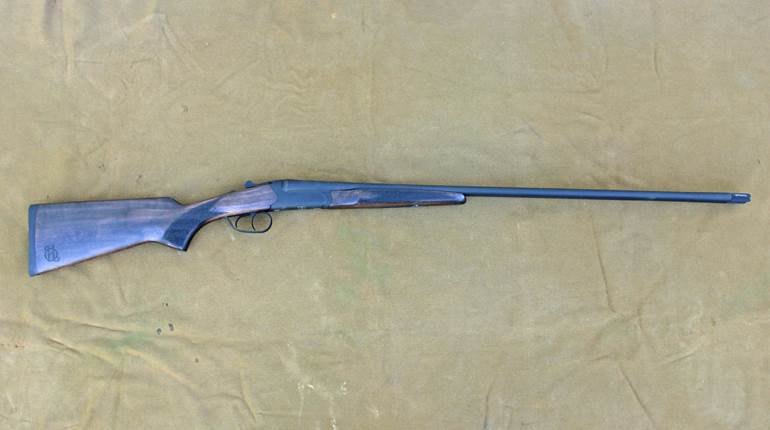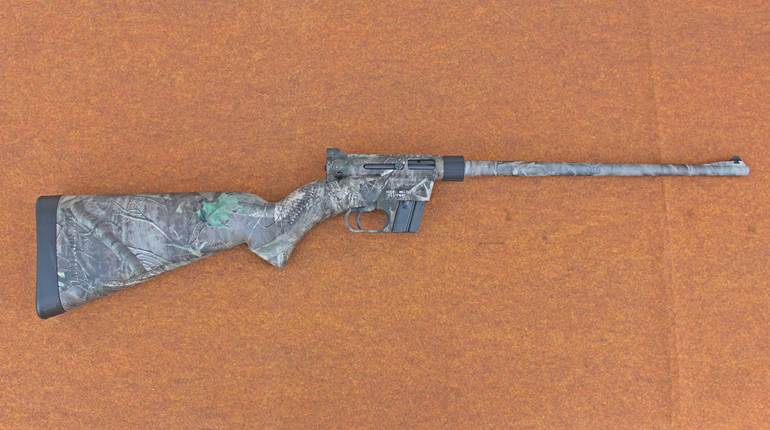
Just in case you didn't notice the big brass band in your driveway playing this tune, 2011 is the 100 year anniversary of the 1911 pistol! If you drop three digits from this celebrated handgun's designation, you'll find that 2011 is also the year of the "9." Namely the new wave of "Pocket 9" 9 mm concealed-carry pistols. With the recent flash flood of pocket .380s to the market, several companies decided this was a good year to up the ante with a still compact, but more powerful pistol.
If there's a reason to be a little disappointed by these new defensive 9 mm handguns, it's this: Too many of them are not technically pocket pistols. They are sub-compact, even sub-sub compact, but several models are just too large and heavy to drop into a front jeans pocket and walk with all day. One company that did succeed in bringing an actual put-it-in-your-pocket 9 mm to the market is Diamondback Arms.
The DB9 is based on Diamondback's successful DB380 .380 ACP design. This means the polymer-framed DB9 also looks a bit like a Glock that shrunk in the wash. Although the Austrian influences are clear, there are several key differences. The shrinking of the gun's dimensions is the most notable. An unloaded DB9 weighs only 11 ounces, making it one of the lightest striker-fired pistols available. The slide is a slim 0.80 inches, with an overall length of just 5.60 inches. By comparison, the DB9 is only 1.2 ounces heavier and 0.50 inches longer than the DB380. I found that pocket holsters, like the Uncle Mike's Sidekick Size 4, worked perfectly with the DB9.
The DB9's steel double-action-only trigger rides on dual connecting bars for a smooth, crisp 5-pound trigger. It uses steel single-stack magazines for a 6+1 capacity. Diamondback has struck a useful balance with its sights, which are low profile and visible at the same time. The safeties of the DB9 are internal. The pistol features Diamondback's patented "Zero Energy" striker system. Unlike other striker systems, where the striker rides under some degree of spring tension, this system has no tension on the striker until the trigger is pressed. The no-tension striker, combined with a mechanical striker block, keeps the striker away from the cartridge primer until the gun is purposely fired.
At the Range
The DB9 is a pistol that requires a firm grip to operate. This is not to say it's difficult to shoot—far from it. The shape and texture of the grip makes this peppy semi-auto manageable to work with, and the trigger is excellent. However, the heavy dual-recoil spring, unlike the lighter springs of .32s or .380s, requires a full-sized gun's level of pressure to rack back successfully. Although the test gun was not ammunition sensitive—it shot everything I fed it without any problems—it proved to be allergic to limp wrists. All semi-autos will jam if the shooter doesn’t provide the proper grip. I purposefully weakened my stance until I forced a jam, and the malfunction showed up sooner than it would with a .380 or .32 ACP. I conducted this exercise to make a point. A very light frame combined with a high-pressure round like the 9 mm needs the shooter to make up for the loss of frame weight with good, solid shooting technique. In other words, the gun ran without any problems when I was doing my job correctly.
I think it's fair to say that most folks know a pocket pistol is not a target pistol. Compressing the features of a handgun to make it exceptionally portable sacrifices the grip size, sights, weight and barrel length needed for long-range accuracy. With that in mind, I went ahead and tested the DB9 from the bench with five-shot groups at 25 yards. At that range, groups hovered in the 4- to 5-inch range. Not bad for a pocket gun, but not reflective of this pistol's intended close-range defensive role. I pulled the targets up to 7 yards and started again. Winchester 147-grain PDX-1 hollow points produced the best-shot groups with a 1.75-inch average. Hornady 124-grain XTP hollow points produced 2.00-inch groups and Remington/UMC 115 grain hollow points 2.50-inch groups. The pistol provides plenty of accuracy for defensive applications.
Some critics of the "Pocket 9" movement focus on the idea that the small 9 mm pistols have too much recoil to be practical for personal defense. Trying to discuss the level of felt recoil produced by a particular handgun is challenging because the sensation caused by gunfire is subjective. One shooter may enjoy shooting an entire box of .44 Mag. rounds while another shooter may fire a single shot and be done for the day. And, recoil can't be judged on caliber alone. The gun's weight and shape can drastically change recoil levels. So the best option for some level of explanation is a comparative exercise.
To check the recoil level of the DB9, it was shot it side-by-side with a Smith & Wesson J-Frame Airweight, chambered in .38 Spl., and the Diamondback DB380 chambered in .380 ACP. All three guns were loaded with Winchester practice-grade standard pressure full-metal-jacket rounds. Bullet weights included a 115-grain 9 mm for the DB9, a 130-grain bullet for the .38 Airweight and a 95-grain bullet for the .380.
The DB9 was fired first to form a base line impression. In other words, the recoil of every other shot would be comparatively higher, lower or the same as the DB9 loaded with practice ammunition. Next on the firing line was the DB380. This compact .380 produced only about 50 to 60 percent of the felt recoil generated by the DB9. When the DB9 and .38 Airweight went head-to-head, they both yielded the same level of recoil with practice-grade ammunition.
Out of curiosity, I tested the DB9 and the Airweight with defense-grade hollow points. The DB9 was loaded with 124-grain standard pressure loads, while the Airweight was fed 125-grain +P loads. I expected the Airweight to have a bit more kick with the +P loads. But even though the two concealed-carry handguns showed a marked increase in recoil with the defense-grade ammunition, they remained equal in their level of felt recoil. The moral of the story: If you are comfortable with the more energetic defensive-caliber concealment guns, then the DB9 is right up your alley. If your experience with small pistols revolves around smaller calibers, then be prepared for the DB9 to add some excitement to your range time.
Final Thoughts
The Diamondback DB9 is a rugged, reliable little pistol with a fit and finish that shows it was built by serious craftsman for regular carry and use. The DB9 has the right set of dimensions and features to rightfully call it a pocket pistol. It would easily slip into the role of a 24/7 pistol that another pistol chambered for a smaller caliber is currently filling. This doesn't mean you should throw out the guns you already have, but if you are in the market for a pocket pistol, and you like the 9 mm as an option, then the DB9 deserves a serious look.
Specs:
Manufacturer: Diamondback Firearms
Action: “Zero-Energy” Striker Double-Action-Only
DAO Trigger Pull: 5 pounds
Caliber: 9 mm
Slide Finish: Melanite, Nickel Boron (EXO models), and Nickel
Frame Colors: Black, Orange, Pink
Sights: Fixed 3-Dot
Barrel Length: 3.00”
Overall Length: 5.60”
Height: 4.00”
Width: 0.80”
Weight: 11 Ozs. Unloaded
Capacity: 6+1 Rounds
Twist: 1:16” RH
Rifle Grooves: 6
Lifetime Warranty
Crimson Trace Laser Sights Available
Suggested Retail: $489.95





































